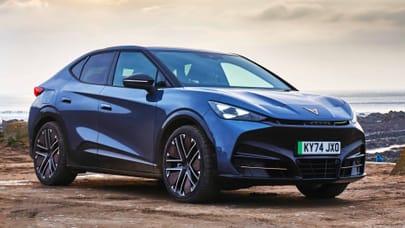
Researchers have improved EV charging in cold conditions by 500 per cent
Time to geek out on glassy anode coatings because you're all here for lithium plating, right?
Making your electric car charge faster when it's freezing outside is tough. The cold affects the battery's chemistry, slowing down the shift of ions between the electrodes. Now, a group of researchers has succeeded in getting the rate of electric car charging in cold conditions up by a whopping 500 per cent, and has achieved this without sacrificing energy density.
How? Magic! Wonder! Hope! The team from the University of Michigan led by associate professor Neil Dasgupta used a lithium borate-carbonate coating – which we'll simply call 'the glassy stuff' – to prevent lithium plating and allow that impressive improvement in charging rates.
To understand in closer detail how those clever beans achieved this, let’s go back to a bit of Science 101.
Slow ions cause two problems: the charging rate isn’t as fast, and fewer ions mean less energy density – thusly, less range. To counteract the lower battery range, carmakers make the electrodes (anode/cathode) thicker, the thinking being more surface area equals more ionic reactions to compensate for the slowness. So far, so relatively straightforward.
Except it’s not straightforward. During the chemical reaction, deposits of lithium build up on the anode, plating it a bit like cheap jewellery made to look expensive. These deposits stop the chemistry, er, chemistry-ing. Plus, now you've got bigger electrodes, adding weight to the battery pack for the same energy density. Nightmare.
In a previous study, Dasgupta and the gang drilled minute holes in the chunkier electrodes using frickin' lasers, to further increase the amount of surface area for the reactions to take place. The result was brilliant at increasing charging times at ambient temps, but at colder ones it didn't really help. Why? That plating.
In this new study, the team coated the anode in the glassy stuff to prevent the lithium caking up, and even at temperatures as low as -10°C, the cells rejuiced five times faster than before. What's more, the researchers also found the modified batteries kept 97 per cent of their capacity, even after being cycled 100 times at subfreezing temperatures. Less degradation, ftw.
Sure, these are all lab-based findings, but the glassy-stuff-and-lasers approach sounds promising, not least because, as Professor Dasgupta points out, it's a relatively small change carmakers can implement without too much adjustment to existing production facilities.
Top Gear
Newsletter
Thank you for subscribing to our newsletter. Look out for your regular round-up of news, reviews and offers in your inbox.
Get all the latest news, reviews and exclusives, direct to your inbox.
Trending this week
- Electric
Top Gear's top 20 electric cars










